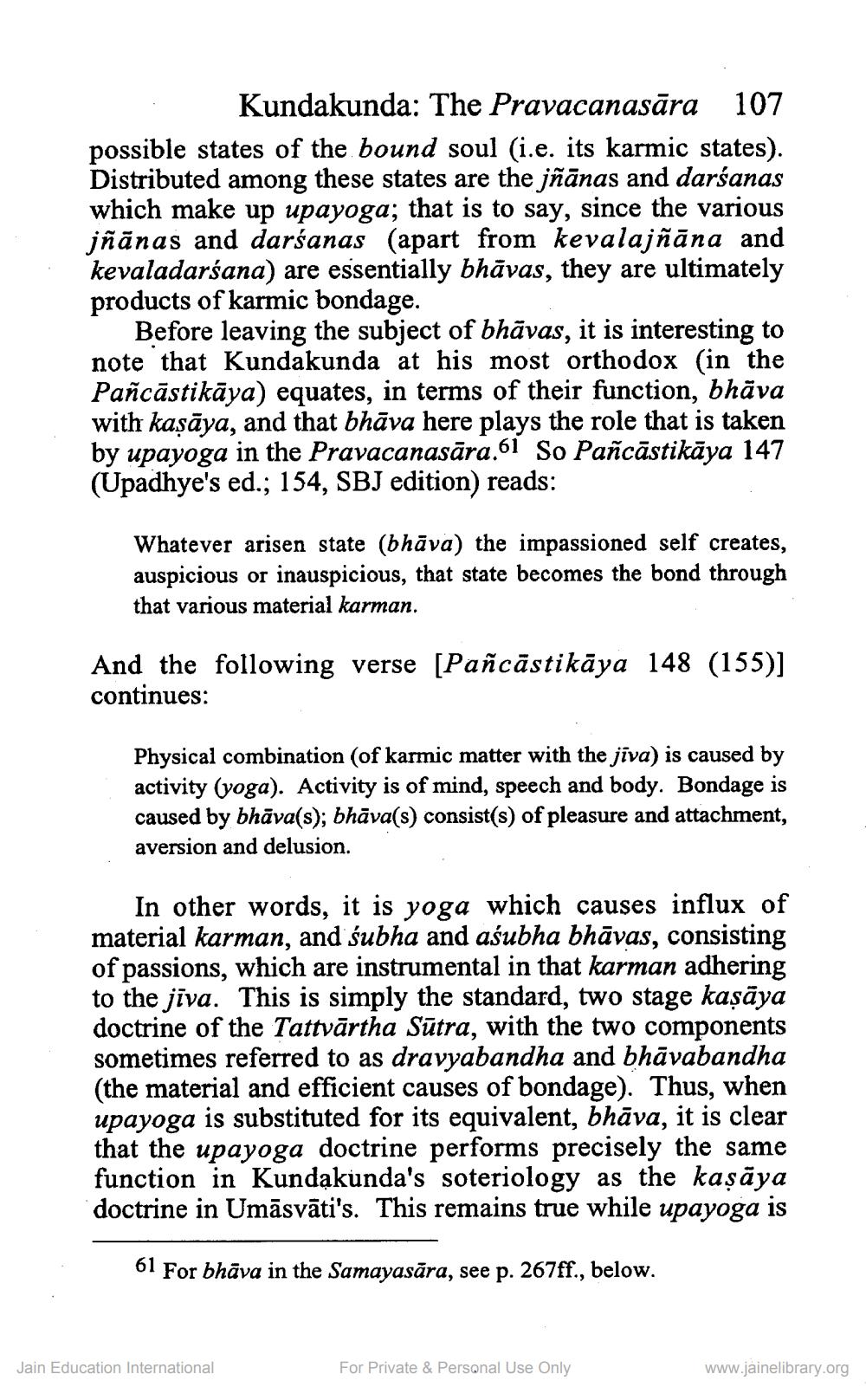________________
Kundakunda: The Pravacanasāra 107
possible states of the bound soul (i.e. its karmic states). Distributed among these states are the jñānas and darśanas which make up upayoga; that is to say, since the various jñānas and darśanas (apart from kevalajñāna and kevaladarśana) are essentially bhāvas, they are ultimately products of karmic bondage.
Before leaving the subject of bhāvas, it is interesting to note that Kundakunda at his most orthodox (in the Pañcāstikāya) equates, in terms of their function, bhava with kaṣāya, and that bhava here plays the role that is taken by upayoga in the Pravacanasara.61 So Pañcastikāya 147 (Upadhye's ed.; 154, SBJ edition) reads:
Whatever arisen state (bhāva) the impassioned self creates, auspicious or inauspicious, that state becomes the bond through that various material karman.
And the following verse [Pañcāstikāya 148 (155)] continues:
Physical combination (of karmic matter with the jiva) is caused by activity (yoga). Activity is of mind, speech and body. Bondage is caused by bhāva(s); bhāva(s) consist(s) of pleasure and attachment, aversion and delusion.
In other words, it is yoga which causes influx of material karman, and subha and aśubha bhāvas, consisting of passions, which are instrumental in that karman adhering to the jiva. This is simply the standard, two stage kaṣāya doctrine of the Tattvärtha Sutra, with the two components sometimes referred to as dravyabandha and bhāvabandha (the material and efficient causes of bondage). Thus, when upayoga is substituted for its equivalent, bhāva, it is clear that the upayoga doctrine performs precisely the same function in Kundakunda's soteriology as the kaṣāya doctrine in Umāsvāti's. This remains true while upayoga is
61 For bhāva in the Samayasara, see p. 267ff., below.
Jain Education International
For Private & Personal Use Only
www.jainelibrary.org




